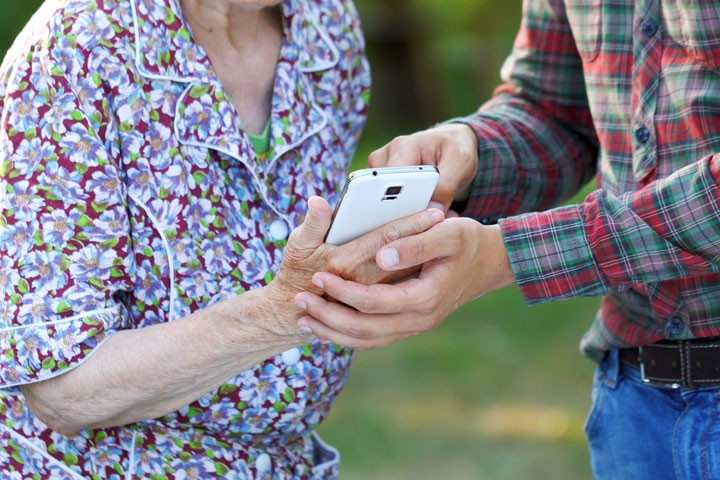A 2020 companion report issued by The National Alliance for Caregiving (NAC) and AARP on Caregiving in the U.S. found that 11% of the 50+ plus caregivers lived a least one hour away from their care recipient. And those numbers are only likely to increase as society continues to be more and more mobile. Providing help and support for an aging friend or family member can include a wide variety of responsibilities, such as: managing money, arranging for in-home care, providing respite care, or helping a parent move. The very nature of these tasks can be daunting in any circumstance, but long-distance caregiving adds an additional level of complexity to a role that is already challenging at best. Here are additional sources offering checklists and tips for long distance caregiving: The National Institute on Aging, The Caregiver’s Handbook; The Administration for Community Living: Caring Across the Miles.
Some Things to Consider
If you are a long-distance caregiver:
- Establish a regular and dependable system of communication, including contract information from trusted friends and family
- Get as accurate a picture of the situation as possible
- Recruit a “local” partner to help you best understand what is going on
- Get permission from the person to talk about things with her health care providers (attend telehealth visits or video meetings with medical professionals, if permissible)
- Learn as much as you can about the disease and available treatments
- Use technology tools (i.e., voice activated devices, video monitors, wearable activity trackers) and features on a mobile phone that the older person is comfortable with (i.e., texting, email, video calls)
- Find community resources and options in the senior’s area. Check out Eldercare Locater, Aging and Disability Resource Centers, and Area Agencies on Aging
Check out the list of tips to make life more manageable for long distance caregivers on the NIH’s 6 Tips for Long Distance Caregiving.
Providing Support for a Caregiver
If someone else is the primary caregiver, there are numerous ways to provide support:
- Attend a caregiver support group in your area to get a sense of what the caregiver is going through
- Listen . . . You may be the person’s only social contact or emotional outlet
- Ask how you can help . . . many people find it difficult to ask
- Don’t be offended if they say “no.” Sometimes help is not what is appreciated, but validating that you appreciate their work can go a long way
When Should You Go?
How do you know when it is time to plan a visit to see firsthand how things are going? And when you go, how do you get the most out of your visit? Consider a few factors before you go:
- What do the person’s local helpers think about the situation?
- What is your elder’s style? Is a visit really necessary? Does the need exist now?
- Can you afford a trip right now . . . or can you plan ahead to book less expensive travel?
- Can you take time off from work?
- What arrangements would need to be made for spouse & kids?
- What would happen if you delayed your visit or did not go?
Things to Consider When You Go
The following are some warning signs to look for when you visit your loved one. If any one of these factors is present, it may suggest that more help is needed:
- Hoarding
- Difficulty managing medications
- Refusal to seek medical treatment
- Poor hygiene
- Not wearing suitable clothing
- Confusion, mood swings, wandering
- Inability to attend to housekeeping
-
Unpaid bills lying around
-
Physical frailty
-
Mobility issues
-
Unexplained bruises, cuts, scratches
-
Inability to take medications
Assessing the Environment
Even if a caregiver returns to the very house that she grew up in and has lots of familiarity with the setting, things change and needs change. Often a fresh perspective is needed when evaluating for safety and security. Consider these elements when assessing the environment:
- Are the stairs manageable, or is a ramp needed?
- Are there any tripping or falling hazards at exterior entrances or inside the house?
- Are any repairs needed?
- Is the house well lit, inside and out?
- Is there at least one handrail on each flight of stairs?
- If a walker or wheelchair is needed, should the house be modified?
- Is there food in the fridge? Is any of it spoiled or expired? Are there staple foods in the cabinets?
- Are bills being paid? Is mail piling up?
- Is the house clean?
- Any new medications unopened — or expired ones laying around?
Putting a Plan in Place
Long-distance caregiving can be difficult and time-consuming, but it can also be rewarding. Some things to keep in mind:
- Find out how you can help
- Gather information about resources
- Encourage the use of outside resources (transportation, meals on wheels, etc.)
- Mobilize family members & friends to be available when the need arises
- Plan your visits – Identify the priorities. You can get more done and feel less stressed
- Spend time with your family member. Take a drive. Go to a movie. Make time to do things unrelated to being a caregiver
- Help your parent stay in contact – make sure they have access to a phone and have your contact information (if possible, set up a shared calendar online or on a smartphone app)
Check out AARP‘s helpful tips for putting the measures in place as a long-distance caregiver.
This article ha been updated November 2023 since it originally published February 2016.
